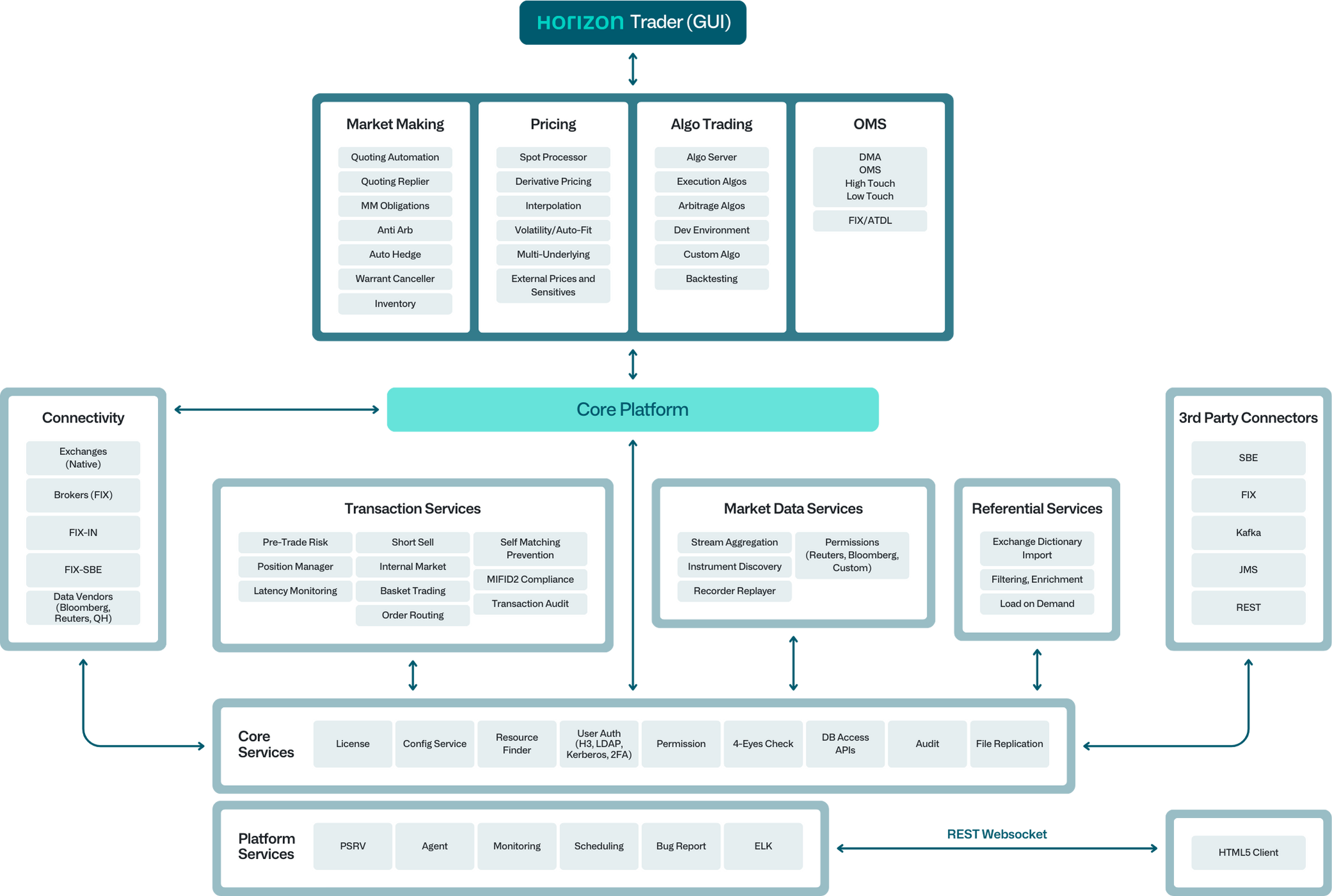In a competitive environment, our clients demand a comprehensive, reliable trading platform that can meet their current needs and will continue to evolve as their business does. Electronic trading software is complex, and the stakes are high. The foundation of Horizon’s platform is built on solid, proven design principles, honed through our commitment to continuous improvement.

And we design Horizon to excel in the key factors clients care about:
Horizon minimizes the time delay between the initiation of a trade or a trading-related action and the execution or completion of that action – because microseconds count.
Our clients need Horizon to handle large volumes of transactions or requests within a specified time frame while maintaining high performance and reliability. That’s why we developed – through optimization and horizontal scaling – an architecture that can perform millions of transactions, and fast.
Horizon maintains stable and consistent behavior, even in the face of unexpected failures, disruptions, or adverse conditions. Horizon’s average uptime rate is more than 99.9% for our managed and hosted solutions.
We design Horizon with your TCO in focus – not only the initial acquisition costs but also ongoing expenses related to maintenance, support, upgrades, and any other costs associated with the system's operation.
Our engineers write impeccably clean code – because identical or similar code in multiple places within a software codebase can lead to maintenance challenges, increased development time, reduced reliability and difficulty understanding the code.
Horizon’s design vision focuses on three key principles that guide the software we design and how we design it.
Horizon provides users with a single, integrated platform with cross-asset capabilities. This has multiple, significant benefits:
Users benefit from a consistent and familiar interface across various business cases, reducing the learning curve and enhancing overall user satisfaction.
A single platform allows for more efficient use of resources, as development, maintenance, and support efforts can be centralized. This often results in cost savings compared to managing multiple independent platforms.
Having a unified platform facilitates seamless data integration and sharing across different business functions.
A consolidated platform can be more easily scaled to accommodate the growth of various business cases. Scaling is streamlined compared to managing multiple platforms with potentially different architectures and scaling requirements.
Integrating various business cases into a single platform promotes better interoperability. For example, integrating a principal desk into an agency flow (internalization) is much easier with one platform.
Service-oriented architecture creates a more flexible, modular and interoperable software environment that aligns with business goals and adapts to changing requirements efficiently.

We take an incremental approach to software development and delivery, which allows for more frequent and predictable releases. This aligns with agile development practices and enables faster response to user needs.
A new increment is released every two weeks, after the completion of each sprint.

Subscribe and be the first to know about the latest news at Horizon.

Subscribe and be the first to know about the latest news at Horizon.
Paris: +33(0)1 42 60 94 90
Montréal: +1 (514) 548-3481
Hong Kong: +852 5803 0818
Bangkok: +66 (0) 2231 2390-4
China: +86 131 7211 4723
Dubaï: +971-586239345
Subscribe to our newsletter and stay updated on our latest news!